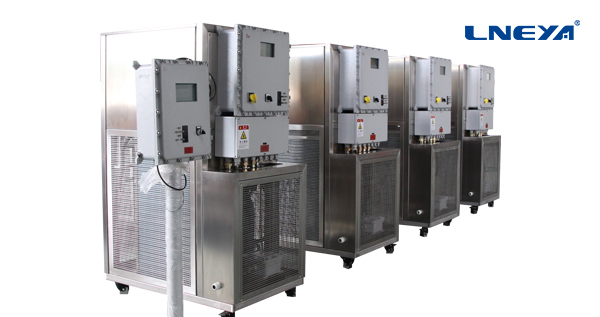Design of chip test circuit for fluid temperature control device
With the continuous development of the domestic chip industry, LNEYA fluid temperature control devices continue to be applied. To this end, the circuit design for the fluid temperature control device chip test, the fluid temperature control device manufacturers need to understand clearly, in order to better produce and sell the fluid temperature control device.
AM-OLED display driver chip is the key component of AM-OLED flat panel display, which has important economic value. The display driver chip integrates row and column driver circuit, image SRAM, charge pump, LDO, gamma correction and various input and output interfaces. . The built-in image SRAM supports WVGA resolution and displays 16.77 megahertz display; on-chip low-power power management technology enhances the battery life of handheld devices. The chip has the characteristics of high integration, low cost and low power consumption, and can be applied to small and medium-sized AM-OLED display modules, including electronic products such as smart phones and digital cameras. Therefore, the fluid temperature control device is aimed at the testing requirements of the AM-OLED driver control chip, and combined with the multi-function module structure characteristics of the chip, a test circuit design scheme of the AM-OLED driver chip is proposed.
The AM-OLED driver control chip power module consists of three charge pumps, two LDOs, and a power-on detection supply to provide the required drive voltages for gamma correction, row drive, column drive, and SRAM modules. Built-in SRAM is used to store image data that needs to be displayed. The OSC oscillator is mainly used as an on-chip clock source. It can generate high-precision clock frequencies by multiplying, dividing, and adjusting the duty ratio, combined with the specific requirements of each demand module. The digital control module is composed of Command decoder and TCON module, which mainly realizes different resolution display, different display mode display, low power mode control, different control and data interface compatibility, row and column drive circuit control, gamma correction and interface decoding function. Enable each module to work in coordination.
For the above driver chip, it is necessary to test the various functional modules and overall performance. The common test items include power module test, and determine the voltage and current index requirements of the power supply such as the on-chip reference, charge pump, and LDO. Linkage test, including switching between power-on, start-up reset, power-saving, and sleep. Dynamic current and average current tests are used to calculate the average power consumption and instantaneous power consumption of the chip. The column driver Source Driver outputs fixed level test, setup time, DNL, INL, DVO test. Test the SRAM integrated in the chip through the SPI port to test whether the basic storage function is correct. The gamma circuit test needs to be carried out step by step. First, test each internal analog circuit to determine whether the reference voltage is generated correctly, and then perform joint test with the column driver connection. Compare the display effect and adjust the voltage error range. The test of the digital control module is mainly compatible with the interface, can be debugged online, and the register can be matched to improve the testability of the chip.
The chip circuit design of the fluid temperature control device has different characteristics, and professional manufacturers should be able to concentrate on analysis and test, and better perform chip test.
(Note: Some of the content is originally from related papers. If you infringe, please contact us in time to delete, thank you!)

 LNEYA Industrial Chillers Manufacturer Supplier -
LNEYA Industrial Chillers Manufacturer Supplier -












